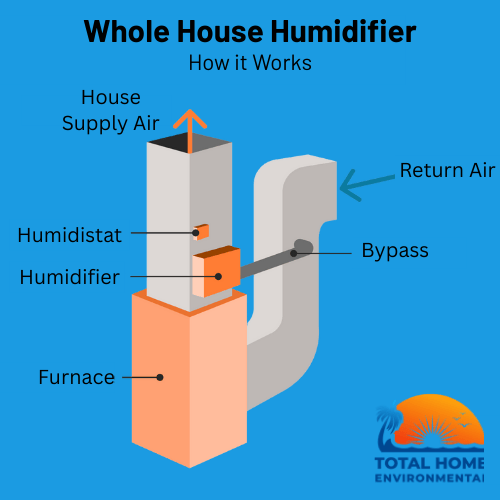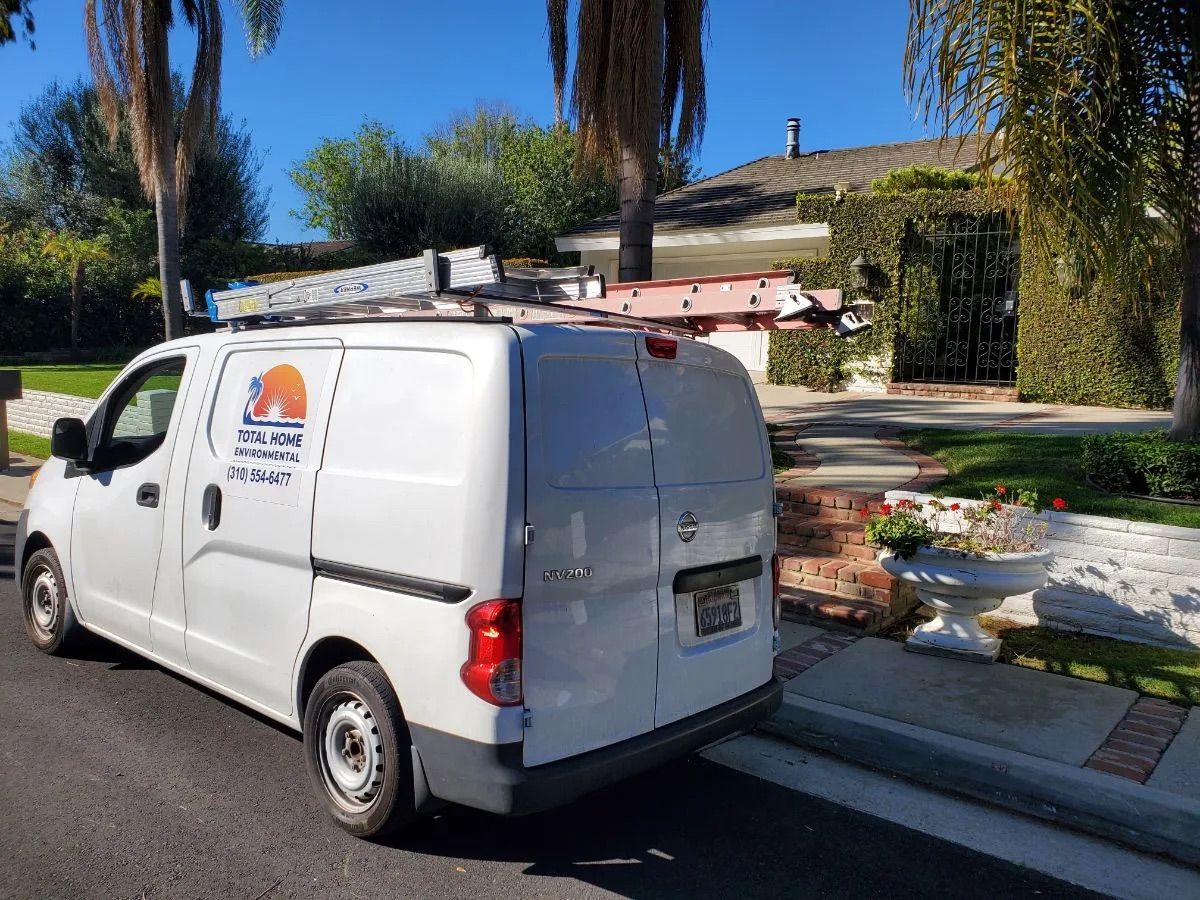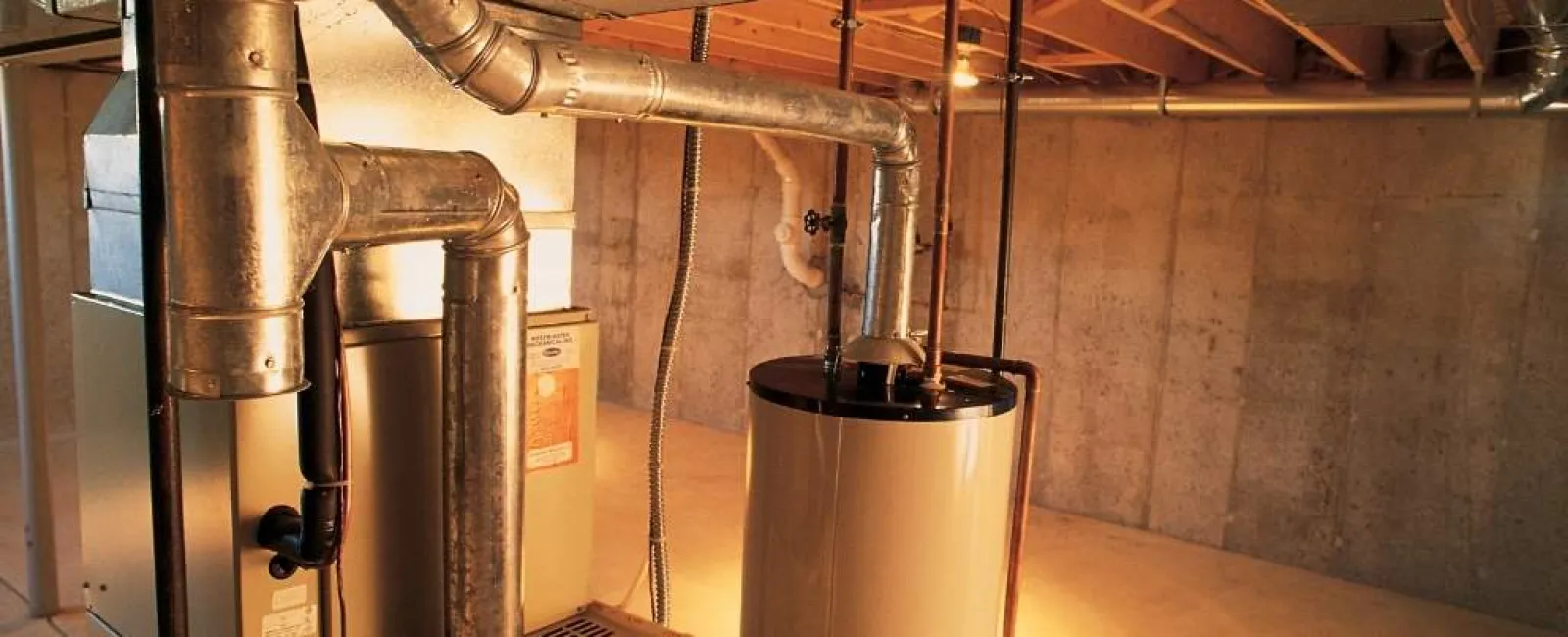September 25, 2025
Whole house dehumidifier installation has become essential for South Bay homeowners battling the persistent coastal humidity that marine layers bring to Torrance, Redondo Beach, and surrounding communities. Living near the Pacific Ocean means dealing with moisture levels that can reach 80-90% humidity during certain seasons, making your home feel uncomfortably muggy even when temperatures are mild. This persistent humidity affects homes in Torrance, Manhattan Beach, and El Segundo, requiring specialized humidity control that Torrance residents have come to understand as essential.
Unlike the dry heat of inland California, South Bay homes experience "wet bulb" conditions where high humidity makes moderate temperatures feel oppressive. Your air conditioning system might maintain a comfortable 72°F, but if humidity levels sit above 60%, the air feels sticky and uncomfortable. This is where whole house dehumidifier installation becomes invaluable for coastal homeowners.
System Types: Integrated vs Standalone Dehumidifiers
When considering whole house dehumidifier installation for your South Bay home, you'll encounter two primary system types: integrated units that work with your existing HVAC system and standalone whole-house units that operate independently. Each approach offers distinct advantages for humidity control. Torrance residents should understand before making their investment.

Integrated HVAC dehumidifier coastal homes systems work in conjunction with your existing system, sharing ductwork and often electrical connections. These systems typically install directly into your HVAC's return or supply ducts, using your existing air handler to circulate dehumidified air throughout the home. This approach often provides the most seamless integration and can be more cost-effective for initial installation.
Standalone whole-house dehumidifiers operate independently, with their own dedicated ductwork, electrical connections, and drainage systems. While these systems require more extensive installation work, they offer superior control and efficiency, particularly important in South Bay's variable humidity conditions, where you might need dehumidification even when heating or cooling isn't required.
Integrated System Advantages
Integrated systems excel in South Bay applications because they leverage your existing HVAC infrastructure while providing targeted humidity control. The most effective integrated installation method for coastal homes is the "dedicated return to supply" approach. This involves installing a new return duct specifically for the dehumidifier, which discharges dry air directly into your supply plenum. This minimizes static pressure issues while ensuring that dehumidified air doesn't pass over your air conditioning coil unnecessarily.
Standalone System Benefits
Standalone whole-house dehumidifiers shine in South Bay homes that experience extreme humidity variations. These systems operate completely independently, meaning they can run continuously during heavy marine layer events without affecting your HVAC system's operation or efficiency. A home dehumidifier South Bay standalone installation typically includes dedicated return and supply ductwork, allowing for precise humidity control throughout the entire home.
Installation Process: Professional Setup Requirements
Proper whole house dehumidifier installation requires careful attention to ductwork integration, electrical connections, and drainage systems - particularly important in South Bay coastal homes where salt air and moisture create unique installation challenges. Professional installation ensures your system operates efficiently while protecting against the corrosive effects of coastal environments.
The installation process begins with a comprehensive assessment of your existing HVAC system and your home's specific humidity challenges. Contractors specializing in humidity control Torrance installations will evaluate your current ductwork, electrical capacity, and optimal placement locations while considering factors like proximity to exterior walls and access for maintenance.
Electrical and Ductwork Requirements
HVAC dehumidifier coastal homes installations must account for additional electrical load while ensuring all connections meet local codes and can withstand the coastal environment's challenges. Most whole-house dehumidifiers require 220V electrical connections, and coastal installations require special attention to electrical connections that resist corrosion from salt air.
Ductwork integration varies significantly between system types. Integrated installations typically require modifications to existing ducts, while standalone systems require completely new ductwork designed specifically for the dehumidifier's airflow requirements and your home's layout.
Drainage System Installation
Proper drainage is crucial, as these systems can remove 50-100+ pints of water daily during peak humidity periods. Most professional installations include condensate pump systems that can move water uphill or long distances to appropriate drainage points, plus safety features like overflow switches that shut down the system if drainage becomes blocked.
Sizing Guidelines: Capacity Calculations for Coastal Homes
Proper sizing is critical for effective whole house dehumidifier installation in South Bay coastal environments. Unlike inland areas with predictable humidity patterns, coastal homes face variable conditions requiring careful calculation of dehumidification capacity based on square footage, construction type, occupancy, and unique coastal factors like air infiltration rates and marine layer frequency. Using ASHRAE ventilation guidelines, we calculate the optimal fresh air requirements based on your home's square footage, occupancy, and coastal infiltration rates.
The basic sizing formula for home dehumidifier South Bay installations starts with square footage but must account for ceiling height, air exchange rates, and the home's moisture load. A typical 2,000 square foot South Bay home might require a 70-90 pint per day capacity unit, but coastal homes typically require 20-30% higher capacity than inland homes due to increased moisture infiltration from marine layers and higher baseline humidity levels.
Calculating Moisture Load
Professional sizing considers multiple moisture sources that coastal homes face. Internal moisture sources include occupants (each person generates approximately 3-4 pints of moisture daily), cooking, showering, and laundry activities. External sources include air infiltration through building envelope gaps, which can be significant during marine layer events when outdoor humidity exceeds 80%.
Advanced sizing calculations also consider your home's thermal mass and construction materials. Homes with concrete foundations, tile floors, or significant glass surfaces may retain more moisture and require additional dehumidification capacity during high humidity periods.
Energy Efficiency: Operating Costs and Performance
Energy efficiency represents a crucial consideration for whole house dehumidifier installation in South Bay homes, where California's high electricity rates make operating cost calculations essential. Modern HVAC dehumidifier coastal homes systems offer significant efficiency improvements over older technology.
A properly sized home dehumidifier South Bay system typically consumes 300-700 watts during operation. During peak humidity season (May through September), you might expect 8-12 hours daily operation, translating to approximately $1.50-5.25 daily operating cost. However, properly controlled humidity allows you to set your air conditioning thermostat 2-4 degrees higher while maintaining comfort - potentially saving 10-20% on cooling costs.
Modern systems include variable-speed compressors, smart controls, and heat recovery systems that significantly improve efficiency. Smart controls with outdoor humidity sensors can automatically adjust operation based on marine layer conditions, preventing unnecessary operation while ensuring rapid response when coastal humidity spikes occur.
Running air conditioning at 68°F to achieve 50% humidity might cost $8-12 daily, while whole house dehumidifier installation allows comfortable 74-76°F temperatures with optimal humidity at $3-6 daily operating cost - providing superior comfort while reducing energy consumption.
Professional Installation: Critical for Coastal Success
Professional installation makes the difference between a system that provides years of reliable service and one that struggles with performance while consuming excessive energy. In South Bay's corrosive coastal environment, proper installation techniques, material selection, and system commissioning become critical for long-term success.

Professional contractors like Total Home Environmental specialize in humidity control Torrance installations. We understand coastal challenges and select corrosion-resistant materials, implement proper sealing techniques, and design installations that account for salt air exposure and variable marine layer conditions.
Critical installation details include marine-grade electrical connections, corrosion-resistant ductwork materials, and sealants that maintain effectiveness despite salt air exposure. Ductwork design requires particular attention where air infiltration patterns may differ from typical inland installations. Professional installers seal all connections, insulate ducts properly, and ensure correct drainage slope.
System commissioning includes performance testing under various conditions, airflow measurement and adjustment, and controls calibration based on your home's specific characteristics. Professional installation also includes homeowner education about optimal system operation and seasonal adjustment procedures.
Take Control of Your Indoor Climate
Whole house dehumidifier installation represents the most effective solution for managing South Bay's unique coastal humidity challenges. From persistent marine layers to salt air concerns, coastal homes require specialized approaches that traditional HVAC systems can't provide alone.
Success depends on proper system selection, professional installation, and understanding your home's specific moisture challenges. Whether choosing integrated or standalone systems, proper sizing and installation ensure optimal performance while minimizing energy consumption.
Professional installation becomes critical in coastal environments where corrosive conditions and variable humidity patterns require specialized expertise. The benefits extend beyond comfort - proper humidity control protects your home's structure, reduces allergens, and can reduce overall energy consumption by allowing higher thermostat settings.
Ready to eliminate excess humidity in your coastal home? Contact Total Home Environmental, we are qualified HVAC professionals who specialize in whole house dehumidifier installation for South Bay properties. Professional assessment, proper system sizing, and expert installation ensure your humidity control investment delivers maximum comfort, efficiency, and reliability for years to come.



